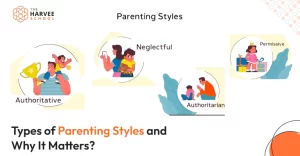Tips To Memorize Things Quicker
Well, the day before a big exam can be challenging. You might feel like you can’t remember anything you’ve studied.
You may wonder “How to Memorize Things Fast?“

Memorization is crucial for doing well on tests and presentations. If you learn how to do it effectively, it can be much easier. So, let’s get started and learn how can you memorize faster.
How Does Memorization Works?
Memorization is the process of learning and retaining information in your memory. For example, when you try to memorize something, you are actually uploading it in your memory for later use. The more you practice and review, the stronger your memory becomes, allowing you to retrieve the information when needed.
You can use tricks to memorize quicker, which acts like organizing information in your mental files. Various memorization techniques can help you remember information more effectively which are listed below.
Tips on How to Memorize Faster
Association Techniques
Association techniques enhance memorization by linking new information to existing knowledge, facilitating easier recall. Here are some effective methods:
1. Memory Palace (Method of Loci)
This ancient technique involves associating information with specific physical locations in an imagined environment. To implement:
- Visualize a familiar place, such as your home.
- Assign each item to be remembered to a distinct spot within this setting.
- Mentally navigate through the environment to recall each item.
Example: To remember a grocery list, picture placing each item in a different room of your house. As you mentally walk through each room, you’ll recall the items associated with those spaces.
2. Link Method
This involves creating a narrative or visual image that connects items in a sequence, making them more memorable. To apply this, develop a story where each item interacts with the next.
Example: To remember geometric shapes, you could associate a square with a flower bed, and a triangle with the roof of your shed. Visualizing these objects in your backyard helps you recall the shapes more easily.
3. Chunking
This strategy breaks down large pieces of information into smaller, manageable units or “chunks.” It’s particularly effective for memorizing numbers or lists.
Example: Memorizing a phone number by dividing it into chunks, such as 955-123-4567, makes it easier to recall.
4. The Mnemonics
These are tools that aid memory by creating associations between new information and something more familiar or easily recallable. Common types include:
Acronyms: Forming a word where each letter stands for the first letter of the items to remember.
Example: “VIBGYOR” helps recall the Rainbow colors: Violet, Indigo, Blue, Green, Yellow, Orange, and Red.
Acrostics: Creating a sentence where the initial letter of each word corresponds to the information to be memorized.
Example: “Every Good Boy Does Fine” assists in remembering the order of notes on the lines of the treble clef in music: E, G, B, D, F
Visual Techniques
Visual techniques involve using visual aids and methods to understand and retain information. It can be beneficial for visual learners who process information better when it’s presented visually. Some visual techniques that can benefit are:
1. Mind Mapping
Mind maps allows us to visually organize ideas and information, making it easier to see relationships between concepts.

For example, a student studying the human body could place “The Human Body” in the center of the map, with branches for different systems like the circulatory and respiratory systems, showing how these systems interact.
2. Color Coding
Assigning colors to specific information helps to categorize and emphasize important concepts.
For example, in a study guide, you might use red for important terms, blue for definitions, and green for examples to make information easier to remember and locate.
3. Flow Charts
Flow charts use symbols and arrows to depict the sequence of steps or processes in a visual format.
For example, you can create a flow chart to visualize a step-by-step guide for a science experiment, making it easier to understand and remember the procedure.
Active Memorization
Active memorization involves actively recalling information from memory without looking at your notes. It’s like a mental self-quiz to make what you’ve learned to retain in your memory better. This step takes frequents practices to achieve.
1. Spaced Repetition
This technique involves spreading out your study sessions over time, rather than cramming everything at once.
Example: If you’re learning new words in a foreign language, study some words on Monday, review them again on Wednesday, and then check them once more a week later. This approach helps strengthen long-term memory retention.
2. Teaching Others
Explaining a concept to someone else helps deepen your understanding of the material.
Example: If you’re studying a topic, try teaching it to a friend or even to an imaginary audience. This forces you to organize and simplify the information, improving your grasp and making it easier to recall later.
3. Recitation
Reciting information aloud repeatedly helps reinforce memory.
Example: If you’re learning new vocabulary, recite the words and their meanings out loud several times. This practice strengthens your memory, making it easier to remember the words when needed.
Physical Memory Boosters
In addition to mental techniques, there are several physical practices that can enhance memory.
Regular exercise, proper sleep, a nutritious diet, and meditation all play crucial roles in boosting cognitive function.
Exercise increases blood flow to the brain, delivering oxygen and essential nutrients that support brain health and strengthen neural connections. Adequate sleep allows the brain to consolidate information, while a balanced diet provides the nutrients necessary for optimal brain performance.
Meditation helps reduce stress and improves focus, both of which are vital for better memory retention. Together, these physical habits support long-term cognitive health. This process strengthens the connections between brain cells and improves cognitive function, including memory.
To Sum it up
Improving your memorization skills not only helps in exams or presentations but also promotes long-term learning. Understanding the material, engaging your senses, self-testing, and getting good sleep are essential components to improve your memory. With some practice, these memorization techniques can become lifelong tools.






